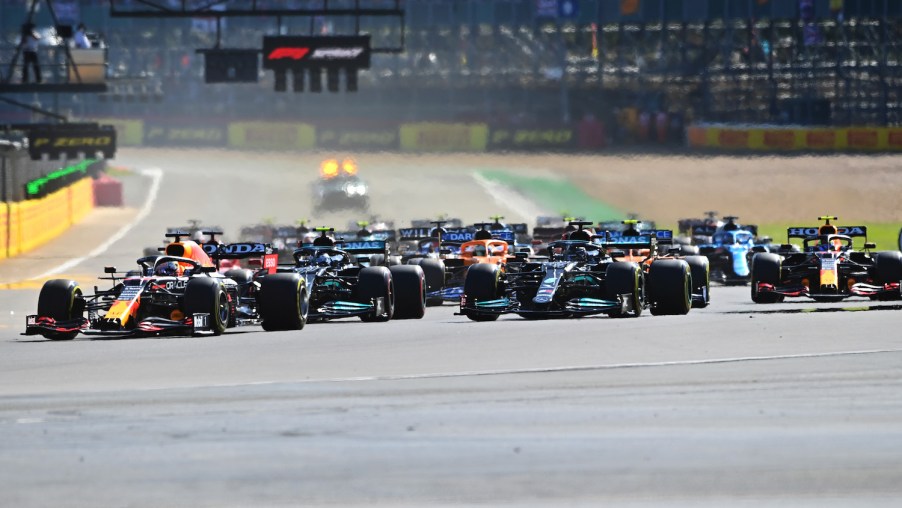
Is Racing Harmful to the Environment?
Car racing gets flack for being environmentally unfriendly, based solely on the “mpg” that race cars get. They burn more fuel than road cars, so they must be harmful, right? Current racecars burn ethanol, which is a much cleaner gas than typical road cars, and although they burn more fuel, they are more efficient at converting heat into power. In fact, the Mercedes AMG F1 engine burns fuel at 50-percent thermal efficiency, meaning it converts 50-percent of its generated heat into forward motion. Road cars sit at the 30-percent mark, though some manufacturers are catching up.
How Harmful is NASCAR’s Racing Fuel?

NASCAR was one of the least green sports on the planet, and in fact used leaded gas until 2007, according to Julia Layton at How Stuff Works. Most road cars were using unleaded gas in the 1980s. NASCAR even went so far as to claim 400 million pounds of the Earth’s CO2 per year. Since 2009, however, NASCAR has gone green.
Current NASCAR stock cars in the premiere Cup championship use a 5.8-liter naturally aspirated V8, outputting between 550-750 horsepower depending on the track. At Speedways and Superspeedways, stock cars push at 200 mph for long stretches of time. These specs may change with the new 2022 regulations.
The official racing fuel they burn is Sunoco Green E15. The fuel is actually green in color and is made up of 15-percent ethanol, and 85-percent 93-octane pump gas. Ethanol, the same alcohol in beverages, is a renewable fuel made from corn and other plant materials, according to the Alternative Fuels Data Center (AFDC). Though it’s still mostly made of gasoline, NASCAR’s fuel, thanks to its blend, burns cleaner than pump gas.
Is Indycar Safe for the Environment?

Indycar used methanol in the mid-90s but stopped using it in part because its flame is almost invisible during the daytime. Though methanol is renewable like ethanol, the process to renew methanol is more difficult. In the mid-2000s, Indycar started experimenting with various ethanol and gasoline mixtures. By 2007 it had settled on 98-percent ethanol and 2-percent gasoline.
Current Indycars have twin-turbocharged 2.2-liter V6 engines capable of 700 horsepower depending on the boost pressure. They run on E85, which is 85-percent ethanol and 15-percent gasoline. Though the cars don’t get many miles per gallon, they burn cleaner than NASCAR, even at 240 mph.
What Racing Fuel Does Formula 1 Use?

F1, long hailed as the pinnacle of motorsport, is still using high-octane pump gas but is slowly inching its way toward a greener climate. Currently, as mandated by the FIA, F1 cars must burn racing fuel with at least 5.75-percent bio-components. As these regulations develop, the sport will see 10-percent in 2022, with a push for 100-percent sustainable fuel being the endgame.
Teams rarely release official numbers, but F1 engines are capable of producing 1,000 horsepower. They use 1.5-liter turbocharged hybrid engines and reach 230 mph top speed at certain race tracks.
Although the fuels are green and getting greener, one of the biggest problems slowing down the sport’s push for a zero carbon footprint is transportation. Teams travel to racetracks via private jets and semi-trucks, which contribute greatly to climate change. However, these sports are cracking down on this aspect and are getting closer to zero emissions.


